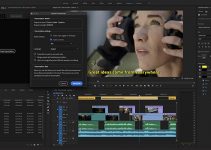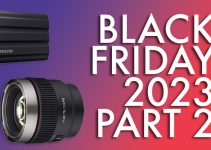Yeap, I totally agree – the OnePlus 6 is by no means a cinema-grade camera like the mighty ALEXA Mini. In fact, the OnePlus 6 is merely a flagship smartphone priced at a relatively low-cost. Despite the phone’s lower price tag of just $500, its camera has been touted as better-than-expected, especially for a lower-end mobile phone. That being said, can the OnePlus 6 hold up against arguably the best digital cinema camera used in the filmmaking industry these days?
Once again, Potato Jet explores the image quality differences between the two devices while going over the pitfalls of the OnePlus 6 and explaining how to attain the best image quality from the smartphone itself.
To dispel any doubts right from the beginning, the ALEXA Mini is the clear, undisputed front-runner here, no doubt about it. Moreover, of the three test shots presented in the video, there are several visual discrepancies that show clearly the OnePlus 6’s lack of cinema-grade image quality when put against the ALEXA Mini.
Regarding image detail, the ARRI camera is capable of capturing the most minute of image information while providing unmatched color fidelity and organic texture. In the OnePlus 6 footage, on the other hand, the edges of small objects appear fuzzy and blurred, whereas the overall image tends to look too oversharpened and contrasty.
Furthermore, if you look at the night-time slow-motion footage, there’s also a clear distinction found between the two cameras. By observing the appearance of the fire from each shot, there are some obvious differences in the captured dynamic range as well.
While the ALEXA Mini can retain the differing intensities of the fire as moves across the frame, the OnePlus 6 makes it appear as one giant ball with blown-out highlights and crushed shadows.
In the meantime, if you look in the darker areas of the frame, the ALEXA Mini captures more detail whereas the OnePlus 6 envelops the cars and pavement in the background in darkness. When it comes to noise, the OnePlus 6 completely falters in this regard as well while the ALEXA Mini presents clean, completely usable images.
Even though it’s apparent that the ALEXA Mini is the superior camera, this shouldn’t stop filmmakers with limited access to professional camera equipment from getting started. When shooting with a smartphone, the most important aspect you need to pay close attention to is lighting. The more light you can shine onto your scene, the better your phone’s image will look considering that the tiny sensors included in smartphones like the OnePlus 6 are too small to handle these low-light conditions.
In addition, take the opportunity to use your smartphone as a means to practice shot composition and try different techniques such as changing the position of your subject in the frame, choosing different camera angles, using additional accessories, etc.
Lastly, although your phone may not possess a full set of picture profiles or color correction capabilities, it’s essential to get the most out of the available camera settings to make your images look more cinematic right off the bat. A viable workaround in that regard would be reducing the sharpening via the camera settings and bringing down the saturation in post.
Of course, if you’re a filmmaker who doesn’t have much more than a smartphone camera at your disposal, it does not necessarily mean that you won’t be able to produce some stunning images. Great footage can still be attained even with some of the less expensive smartphones as long as you use the proper cinematography techniques and put enough effort to get the best possible results.
[source: Potato Jet]
Disclaimer: As an Amazon Associate partner and participant in B&H and Adorama Affiliate programmes, we earn a small comission from each purchase made through the affiliate links listed above at no additional cost to you.



